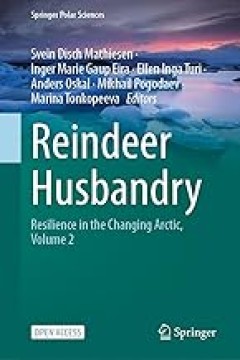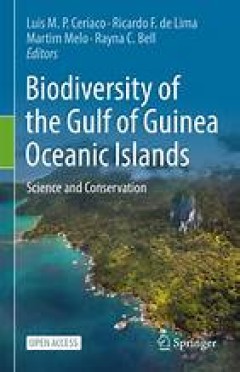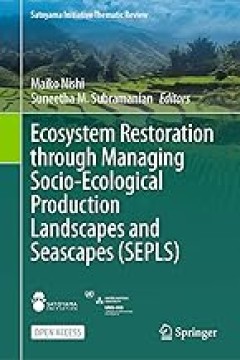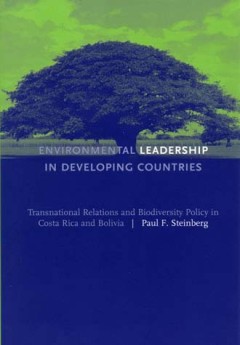Filter by

Species Concepts in Biology: Historical Development, Theoretical Foundations …
Frank E. Zachos offers a comprehensive review of one of today’s most important and contentious issues in biology: the species problem. After setting the stage with key background information on the topic, the book provides a brief history of species concepts from antiquity to the Modern Synthesis, followed by a discussion of the ontological status of species with a focus on the individuality …
- Edition
- -
- ISBN/ISSN
- 978-3-319-44966-1
- Collation
- -
- Series Title
- -
- Call Number
- -

Reindeer Husbandry
This open access book focuses on climate change, Indigenous reindeer husbandry, and the underlying concept of connecting the traditional knowledge of Indigenous reindeer herders in the Arctic with the latest research findings of the world’s leading academics. The Arctic and sub-Arctic environment, climate, and biodiversity are changing in ways unprecedented in the long histories of the n…
- Edition
- 1
- ISBN/ISSN
- -
- Collation
- -
- Series Title
- Springer Polar Sciences
- Call Number
- XXVI, 278

Biodiversity of the Gulf of Guinea Oceanic Islands
This open access book presents a comprehensive synthesis of the biodiversity of the oceanic islands of the Gulf of Guinea, a biodiversity hotspot off the west coast of Central Africa. Written by experts, the book compiles data from a plethora of sources – archives, museums, bibliography, official reports and previously unpublished data – to provide readers with the most updated information …
- Edition
- 1
- ISBN/ISSN
- 978-3-031-06153-0
- Collation
- -
- Series Title
- -
- Call Number
- XXV, 694

Reindeer Husbandry
This open access book focuses on climate change, indigenous reindeer husbandry and the underlying concept of connecting the traditional knowledge of indigenous reindeer herders in the Arctic with the latest research findings of the world’s leading academics. The Arctic and sub-Arctic environment, climate and biodiversity are changing in ways unprecedented in the long histories of the nor…
- Edition
- -
- ISBN/ISSN
- 978-3-031-42289-8
- Collation
- XXXVI, 217
- Series Title
- -
- Call Number
- -

Between preservation and exploitation :transnational advocacy networks and co…
"In the late 2000s, ordinary citizens in Jamaica and Mexico demanded that government put a stop to lucrative but environmentally harmful economic development activities -- bauxite mining in Jamaica and large-scale tourism and overfishing on the eastern coast of the Yucat?an Peninsula. In each case, the catalyst for the campaign was information gathered and disseminated by transnational advocacy…
- Edition
- -
- ISBN/ISSN
- 9780262333924
- Collation
- 1 online resource (xl, 301 pages).
- Series Title
- -
- Call Number
- -

Biodiversity of the Gulf of Guinea Oceanic Islands
This open access book presents a comprehensive synthesis of the biodiversity of the oceanic islands of the Gulf of Guinea, a biodiversity hotspot off the west coast of Central Africa. Written by experts, the book compiles data from a plethora of sources – archives, museums, bibliography, official reports and previously unpublished data – to provide readers with the most updated information …
- Edition
- 1
- ISBN/ISSN
- 978-3-031-06153-0
- Collation
- -
- Series Title
- 20 b/w illustrations, 81 illustrations in colour
- Call Number
- XXV, 694

Ecosystem Restoration through Managing Socio-Ecological Production Landscapes…
This open access book is a compilation of case studies that provide useful knowledge and lessons that derive from on-the-ground activities and contribute to policy recommendations, focusing on the relevance of social-ecological production landscapes and seascapes (SEPLS) to ecosystem restoration. Building on the concept of SEPLS, the Satoyama Initiative promotes landscape approaches as integrat…
- Edition
- -
- ISBN/ISSN
- 978-981-99-1291-9
- Collation
- XXII, 288
- Series Title
- -
- Call Number
- -

Environmental Leadership in Developing Countries: Transnational Relations and…
The first in-depth study of the politics of environmental policy reform in developing countries, with emphasis on Costa Rica and Bolivia.OCLC-licensed vendor bibliographic record.
- Edition
- -
- ISBN/ISSN
- 9780262284271
- Collation
- 1 online resource (xv, 280 pages) :illustrations, maps.
- Series Title
- -
- Call Number
- -

Forgotten values :the World Bank and environmental partnerships
An examination of the conflict between values and bureaucracy in World Bank biodiversity partnerships that sheds light on this model of global environmental governance. Multi-stakeholder partnerships have become an increasingly common form of global governance. Partnerships, usually between international organizations (IOs) or state agencies and such private actors as NGOs, businesses, and acad…
- Edition
- -
- ISBN/ISSN
- 9780262359054
- Collation
- 1 online resource
- Series Title
- -
- Call Number
- -

Power of position :classification and the biodiversity sciences
How biodiversity classification, with its ranking of species, has social and political implications as well as implications for the field of information studies. The idea that species live in nature as pure and clear-cut named individuals is a fiction, as scientists well know. According to Robert D. Montoya, classifications are powerful mechanisms and we must better attend to the machinations o…
- Edition
- -
- ISBN/ISSN
- 9780262369961
- Collation
- 1 online resource (272 pages).
- Series Title
- -
- Call Number
- -
 Computer Science, Information & General Works
Computer Science, Information & General Works  Philosophy & Psychology
Philosophy & Psychology  Religion
Religion  Social Sciences
Social Sciences  Language
Language  Pure Science
Pure Science  Applied Sciences
Applied Sciences  Art & Recreation
Art & Recreation  Literature
Literature  History & Geography
History & Geography